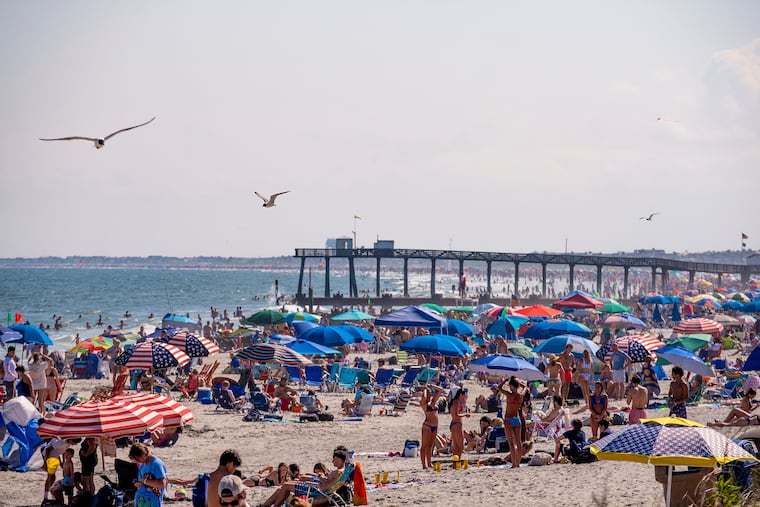There is never an excuse for your umbrella to fly down the beach | Opinion
It’s a bird! It’s a plane! It’s $50 worth of shade about to impale Great Aunt Myrtle.

There is never, under any circumstances, an excuse for an umbrella pinwheeling down the beach. It really can be a matter of life and death. And yet, at the Jersey Shore this summer, more parasols than seagulls are taking flight. It’s a bird! It’s a plane! It’s $50 worth of shade about to impale Great Aunt Myrtle.
On a recent Sunday, my husband and I happily unfolded ourselves onto the beach in Cape May. We have a friend who works at a hotel, and he allowed us into the establishment’s seaside service area, where guests are provided with lounge chairs and wood-pole umbrellas honed to a shiv-like point.
In the space of an hour, we saw three of these professionally inserted gamps take off faster than kids on the boardwalk’s SkyCoaster. One woman, seeing that her sun protection had turned into a killer canvas tumbleweed, slowly hoisted herself from her towel and moseyed to where the unmoored menace had caught on a dune. (This is not the time for a leisurely Baywatch jog, ladies!) Meanwhile, I spent the rest of the afternoon on high alert, ready to dive-bomb the next rogue projectile — bikini be damned.
No one was injured this day, but things could easily have turned out differently. According to the Consumer Product Safety Commission, more than 31,000 people were treated in hospitals for umbrella-related injuries between 2008 and 2017. In 2015, a man lost an eye — and underwent brain surgery — due to a careening umbrella on Delaware’s Bethany Beach.
Two years ago, one of these shore javelins pierced clear through a woman’s ankle in Seaside Heights. And, in 2016, a 55-year-old woman was harpooned through the torso in Virginia Beach. A spokesperson for the local police department called the latter incident a “death due to nature.” Last I checked, umbrellas don’t grow in the Pine Barrens.
Sometimes, these injuries lead to costly litigation. A woman settled with the State of New York for $200,000 after a blow to the head resulted in nerve damage. And all this for a portable awning that might not even be that functional. One study found your average umbrella provides a sun-proof factor of only three to seven — womp, womp.
So, what’s the solution? A few years back, I spoke with Larry Weinstein, a physicist who studied the 2016 fatality. He told me the victim had been struck with the force of 800 pounds — the weight of a jet ski. His scientific recommendation for safe umbrella insertion is to plant at least one-third (yes, one-third) of your pole into the sand. Angle it at 30 degrees — into the wind. And, for the love of Helios, do not use the device in gusts exceeding 20 miles per hour.
There is a lot going wrong in the world, and much of it we cannot control. But the torpedoing of fellow beachgoers? Preventable.
Think of it this way: Are you being as vigilant with the security of your beach canopy as you are with the security of your Wawa hoagie, vulnerable to predatory seagulls? If not, you deserve some shade. And not the umbrella kind.
If you do everything right and still — somehow — your umbrella goes airborne? Throw down the beverage, leap off the blanket, and run after that thing as if your life depended on it.
Someone’s just might.
Diane Stopyra is a writer based in Cape May.